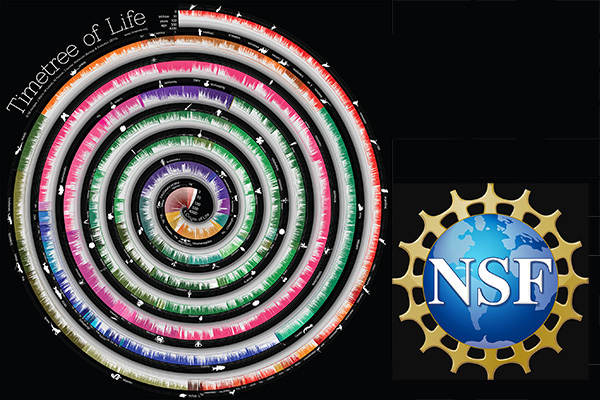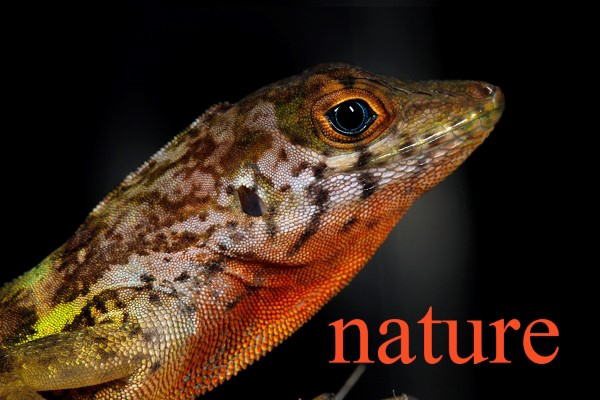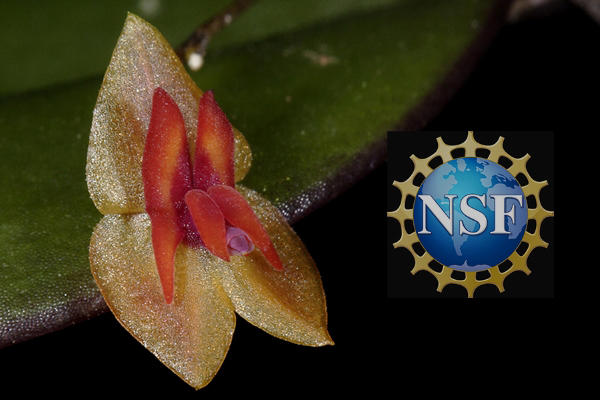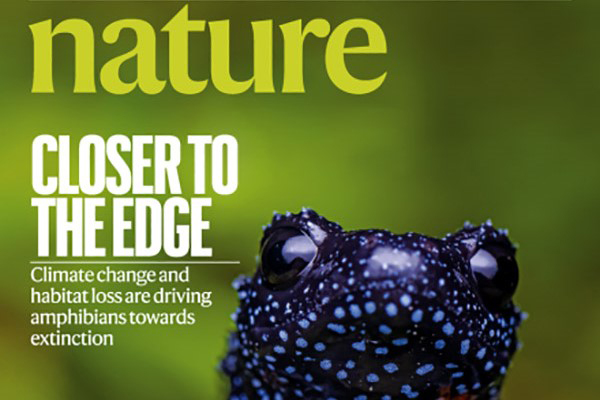News

Lab Awarded NSF Grant for Building the Timetree of Life
14 February 2024
NSF has awarded $1 million to build a comprehensive timetree of life representing the evolutionary history of biodiversity and deliver it via TimeTree [LINK]. Led by Blair Hedges and Sudhir Kumar, it is a collaborative effort with Zoran Obradovic and Caryn Babaian. The general public and experts can query the website to obtain the divergence time of any two species, a timeline, and a timetree of any group of species. The timescale of life, delineating when species diverged from common ancestors, serves as a framework for understanding biology and is fundamental context for other fields of science such as geology, chemistry, and biomedicine. The advancements in genomics and computing have refined this timescale, resulting in the publication of thousands of evolutionary trees scaled to time, known as timetrees. Users can obtain the divergence time of any two species, a timeline showing all evolutionary splits back in time, and exportable timetrees of any group or from a custom list of species. Events in geological and astronomical history, such as asteroid impacts, oxygen levels, and solar luminosity, are integrated into the same timescale with species timetrees and timelines, facilitating interdisciplinary research and applications in areas like molecular biology, conservation, and medicine. The new TimeTree resource will implement new algorithms, tools, and application programming interfaces to speed, improve, and increase the efficiency of timetree curation and data mining. It will have a new online educational component designed for K-12 and college students. Image: A spiral timetree of 50,632 species.

Our Nature Paper Highlights Global Amphibian Threats
4 October 2023
Today our Nature paper on amphibians was published. The study, “Ongoing declines for the world's amphibians in the face of emerging threats,” is based on the second global amphibian assessment conducted by the International Union for Conservation of Nature. The assessment evaluated the extinction risk of more than 8,000 amphibian species from all over the world, including 2,286 species evaluated for the first time. More than 1,000 experts across the globe contributed their data and expertise, which found that 41% of amphibians are threatened with extinction, more than any vertebrate class. The species assessments are available on the IUCN Red List of Threatened Species. We found that habitat loss and degradation is the greatest threat, affecting 93% of all threatened amphibian species. Disease caused by the chytrid fungus, and overexploitation, also continues to cause amphibian declines. These are all threats that are exacerbated by the effects of climate change. In fact, when only the species showing an increase in extinction risk—by moving to a higher threat category since the 2004 assessment—were considered, climate change appeared as a substantial emerging threat. Hedges played a key role in this study and the previous one in 2004 with his expertise on amphibians of Caribbean islands, a region found in this analysis to have the most threatened species. This work was widely covered in the media (NBC News, ABC News, Fox, NPR, AP, Reuters, USA Today, Washington Post, etc.).
Nature cover photo by Sandeep Das.
NOTE ADDED: the printed version of this article made the cover of Nature on 12 October and Leonardo DiCaprio spotlighted it in an Instagram post.

Lab Awarded Major NSF Grant for Biodiversity Forecasting
27 July 2023
NSF just awarded our lab a 4-year grant ($2M) for “forecasting functional biodiversity change with satellite remote sensing and modeling.” It is from their new program “Biodiversity on a Changing Planet” (BoCP). The grant is shared with co-PI Professor Zhe Zhu and his group (Global Environmental Remote Sensing Laboratory) at the University of Connecticut. Other senior researchers involved in the project are Dr. Zhiqiang Yang (USDA Forest Service), Dr. Thomas Brooks (IUCN), and Prof. James Ackerman University of Puerto Rico. The project will use satellite imaging and species location records in primary forests of the Caribbean to determine which species are threatened with extinction and how their loss will affect ecosystem function across the landscape. The outcomes will help focus limited resources on protecting the most vulnerable and functionally important species in these highly vulnerable areas. Biodiversity is essential for the processes that support life, but forests are disappearing around the world, leading to a major loss of species. This research will improve on current methods of assessing extinction risk and will map the location of primary forest habitats, which are regions of original forest not previously disturbed that hold the most biodiversity with the greatest number of ecological functions. An additional outcome of the project will be to identify the most critical areas for better protection of biodiversity.
Photo (by Eladio Fernandez): Red orchid in Macaya National Park, Haiti.

Leonardo DiCaprio Spotlights our NGO, Haiti National Trust
2 July 2023
In an Instagram post today, Hollywood actor Leonardo DiCaprio called attention to new funding received by Haiti National Trust (HNT), the non-governmental organization (NGO) in Haiti created by Blair Hedges and Philippe Bayard. He pointed out that HNT just received additional funding of $2 M Euros from the German agency Arbeiter-Samariter-Bund. As explained on the HNT web site, the aim of the new project is to strengthen the resilience of ecosystems and communities at risk from climate change in the south of Haiti. It will improve the governance of Grand Bois National Park through awareness and training programs. Additionally, it will implement educational programs in schools and community centers to educate youth on the importance of protecting the environment. The project will also continue the crucial ecological restoration activities of HNT in the park. These activities involve native species nursery maintenance, reforestation, and removal of invasive species, among others. The goal is to restore the biodiversity of the park and ensure the preservation of the environment. The project's third component is the implementation of alternative livelihoods, which will provide sustainable economic opportunities for communities in the buffer zone of the park. This is a significant step towards ensuring that the park's natural resources are protected for future generations.
Photo: view of Grand Bois National Park, Haiti.

Congratulations to Dr. Molly Schools for Getting her PhD!
10 May 2023
Molly was awarded a PhD in Biology today, on-schedule, after five years in the Hedges Lab. Her enormous (900 page+) dissertation was entitled “Evolution, systematics, biogeography, and conservation of diploglossid lizards.” She managed to make one of the most-poorly-known families of reptiles into one of the best-known families. Her three-part work involved a generic-level revision of the family published in Zootaxa in 2021, a phylogenomic analysis of historical biogeography and ecomorphs in the family published in Molecular Phylogenetics and Evolution in 2022, and a species-level taxonomic study of the major Caribbean radiation, the subfamily Celestinae. Molly will take a much-deserved (short) break before jumping into a postdoctoral position in Nebraska.

Our Nature paper Highlights Global Reptile Threats
22 April 2022
For this Nature study, a diverse research team, representing 24 countries across six continents, analyzed the conservation needs of 10,196 reptile species in comparison with mammals, birds, and amphibians. Reptiles in the study include turtles, crocodiles, lizards, snakes, and tuatara, the only living member of a lineage that evolved in the Triassic period approximately 200-250 million years ago. The research revealed that efforts to conserve threatened mammals, birds, and amphibians are more likely than expected to co-benefit many threatened reptiles. Although reptiles are well known to inhabit arid habitats such as deserts and scrubland, most reptile species occur in forested habitats, where they—and other vertebrate groups—suffer from threats such as logging and conversion of forest to agriculture. The study found that 30% of forest-dwelling reptiles are at risk of extinction, compared with 14% of reptiles in arid habitats. The New York Times published a nearly full-page story on the research.
Photo (by S. Blair Hedges): an endangered lizard from Haiti, the Haitian Banded Red-bellied Anole, Anolis rupinae.

David Attenborough's Movie with our Timetree Wins Emmy
21 September 2016
David Attenborough's Emmy Award-winning film and television program Rise of Animals (Smithsonian Channel) uses Hedges and Kumar's circular timetree of life as its framework. An early product of their TimeTree database, a circular timetree of life containing 1,610 families of organisms was presented by Hedges and Kumar in the first chapter of their book in 2009, The Timetree of Life. This illustrates the synthetic nature of the TimeTree project, where the result of many individual published studies are brought together to yield something new and useful for scientists and the public. For the Attenborough movie, the timetree of life was literally brought to life using animated computer-generated imagery (CGI), in scenes every 10 minutes throughout the two-hour movie. The Emmy award was presented by the National Academy of Television (Arts and Sciences) on September 21, 2016 for “Outstanding Nature Programming.” Reviews of the program consistently highlighted the CGI with some noting it was “striking” (The Independent) and “stunning” (BBC). This suggests that the timetree CGI, in part, contributed to the program winning the Emmy.